The Many Differences Between French Bread and Italian Bread
Both Italy and France are countries that specialize in bread making. Sure, when we sit down to eat at a restaurant in the US, we are given a bread basket to start our dinner. But bread is essential to almost every meal in Italy and France.
If the bread supply runs out in either of these countries, you can expect riots in the streets. However, the two countries approach bread-making quite differently from one another.
Baguettes, focaccia, brioche— all these breads differ vastly in size, shape, and how they are served. Regardless of differences, as Americans, we enjoy this bread daily.
If you want to know more about how these breads are created in their native countries and what sets them apart, look at what I have come up with below.
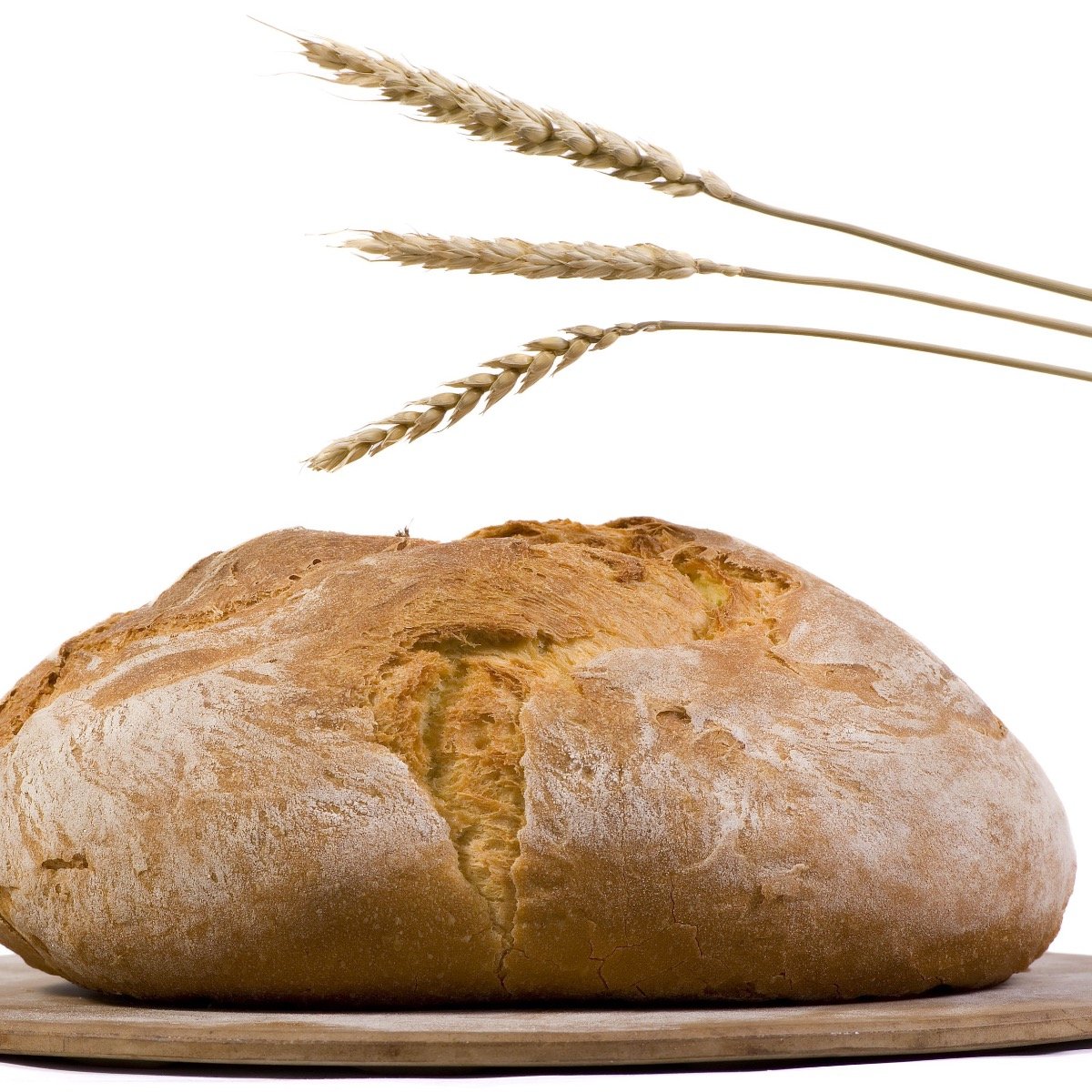
When we think of French bread, we usually think of the “French stick.” This is a long, thin, crusty loaf typically called a “baguette,” which directly translates into “a stick.”
Although baguette may be the most popular type of bread in France—it is eaten throughout almost every province—it is certainly not the only kind made.
Other types of ordinary French white bread include couronne, bread in the shape of a ring, and “country bread” (pain de Campagne), which often contains whole wheat or rye flour.
Regarding Italian bread making, the paisanos are known to allow the yeast to fully rise over a few hours, resulting in a very thin-crusted loaf. The interior of Italian bread is typically incredibly moist and absorbent—the better to soak up olive oil and tomatoes from Caprese.
Types of Italian bread include ciabatta— made of wheat flour and yeast—piadina, flour, lard, and salt—and panettone, a bread native to Milan. Both countries make delicious loaves, but the similarities between Italian and French bread end when you compare the two side by side.
The first way to distinguish Italian from French bread is simply eyeballing the two. French and Italian bread comes in all shapes and sizes. However, to broadly generalize, while French bread is long with rounded edges, Italian bread comes in a more overall circular shape.
French bread is typically baked in a long, thin shape and has become the major food symbol of the country. The baguette can be baked as long as 30 inches and is a staple in almost every region.
On the other hand, Italian bread is known to be baked in a more flat and round shape. Italian loaves are also shorter and typically thicker than their French counterparts. Although it is possible to get baguette-type-looking bread in an Italian bakery, on average, most Italian bread is shaped into larger rounds.
There are endless variations in the size and shape of bread in each country, but these are the major indicators that distinguish the two.
Because bread comes with every French and Italian meal, you might think they are served for the same reasons. However, In France, bread is usually given as a starter. French brioche, a sweet bread, is even eaten in the morning with breakfast meals. The French also employ the baguette as a multipurpose bread, used for sandwiches and as the base for canapés
On the other hand, Italian bread is usually served as a supplement to pasta or other main courses. It’s a side dish, if you will. Italians eat bread to absorb the flavors of olive oils or the thick sauces in a rich meal.

Although there are vast differences, classic French and Italian bread are mostly made with the same ingredients in a similar fashion. However, one significant difference in ingredients is that bread making in France is more tightly controlled than in Italy.
By law in France, bread cannot have added oil or fat. French baguettes, for instance, must be made from water, flour, yeast, and salt, with a very little amount of dough improver allowed.
Italian bread often contains a little more milk, olive oil, and sometimes sugar. Thus, Italians seem to be working with wetter dough as their base than the French.
Italian bread is often baked in a flat stone oven like their pizzas. Pane di Genzano, for instance, is a fragrant bread from Lazio, a region located in the central peninsular section of the country, usually cooked in a wood fire or stone oven. This baking style gives the bread a signature smoky flavor and pungent aroma.
Conversely, the French are known for using electric convection deck ovens. This method of baking gives the loaf an overall softer texture. They bake their bread usually at the same temperatures as the Italians.
France is famous for its brioche, a sweet bread made with unsalted butter and eggs added to the dough to give it a”sugary sweet” taste. There are all types of bread in France, but typically, they make sweeter loaves than the Italians—think of French toast!
Italy is famed for its savory bread. One, in particular, is focaccia, a flat oven-baked product similar to pizza dough in texture. Typically, focaccia is topped with herbs and other savory ingredients such as olive oil or salt. Another exquisite savory Italian bread is Pane Casareccio, a popular rustic stuffed bread.
While the French usually stick to sweets, Italians embrace the savories.
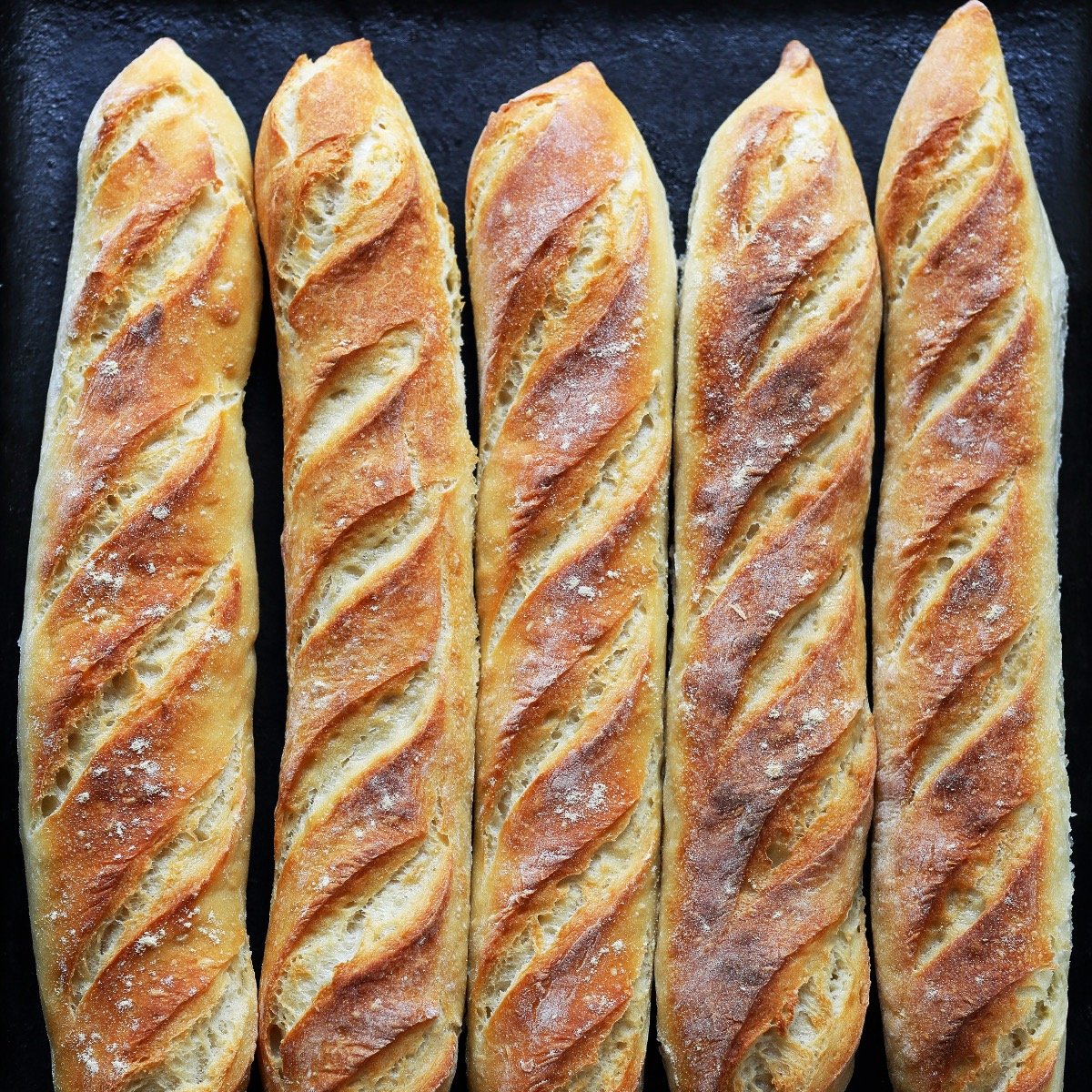

Not all French bread falls under the category of baguette. Take a look.
Baguettes are long, thin loaves of white bread made from a basic dough. Incisions are cut into the top of the loaf to allow it to expand and give the bread its trademark appearance. As stated earlier, the baguette dough is defined by French law, and only slight variations are allowed regarding ingredients.
Two types of baguettes are generally available in France: traditional and commercial. The traditional baguette only has wheat flour, water, salt, and yeast.
Commercial baguettes are sold in supermarkets and often found in restaurants. In addition to the main ingredients used in traditional baguettes, commercial baguettes contain additives. The yeast typically used in commercial baguettes is “levure” instead of “levain.”
Levure yeast allows the bread to rise much faster for commercial purposes. Without additives, baguettes do not keep well because they contain no fat.
In the U.S., “French bread” refers to a loaf of a particular shape, i.e., a long and thin stick. But outside the United States, “French bread” can refer to all different types of loaf, including, but not limited to, the standard baguette.
Other types of French bread include ficelle (a small, thin baguette) or pain de Campagne, a rounded loaf containing sourdough. Each region in France has its specialty bread, some of the most notable being fig and walnut, characteristic of the south, and milk bread in the northern region.
And Then There Are Ciabatta and Focaccia Bread
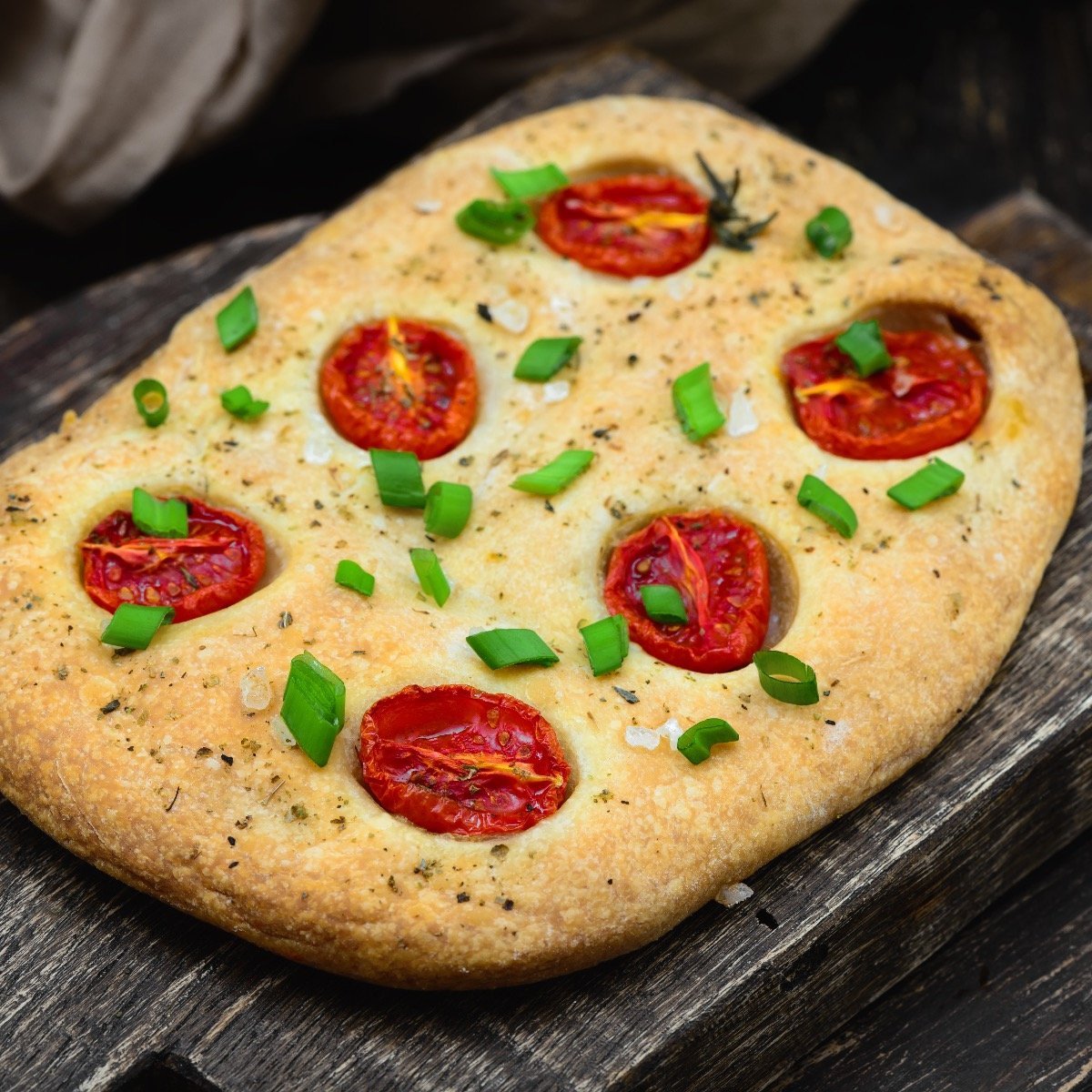
Focaccia bread is an Italian flatbread commonly topped with herbs, olive oil, and salt. It originated in the region of Liguria, on the northwest coast of Italy, and is a staple in many Italian cuisines.
To make focaccia bread, you will need all-purpose flour, active dry yeast, salt, olive oil, and water. Mix the flour, yeast, and salt in a large mixing bowl. In a separate bowl, combine the olive oil and water, then add this to the flour mixture and stir until a dough forms. Knead the dough on a floured surface for about 10 minutes or until it becomes smooth and elastic.
Next, place the dough in a greased bowl, cover it with a towel, and let it rise in a warm place for about an hour or until it has doubled in size. Once the dough has risen, transfer it to a greased baking sheet and use your fingers to press it into a flat, even layer.
Use a fork to make indentations on the surface of the dough, and brush it with olive oil. Sprinkle the dough with herbs and salt, and bake it in a preheated oven at 375 degrees Fahrenheit for about 25 minutes or until golden brown.
Focaccia bread is delicious on its own, but it can also be used as a base for sandwiches or topped with various ingredients such as tomatoes, onions, olives, or cheese.
It is a versatile and flavorful bread that is easy to make at home and will surely be a hit with family and friends. Try making a batch of focaccia bread the next time you want to add some Italian flair to your meal.
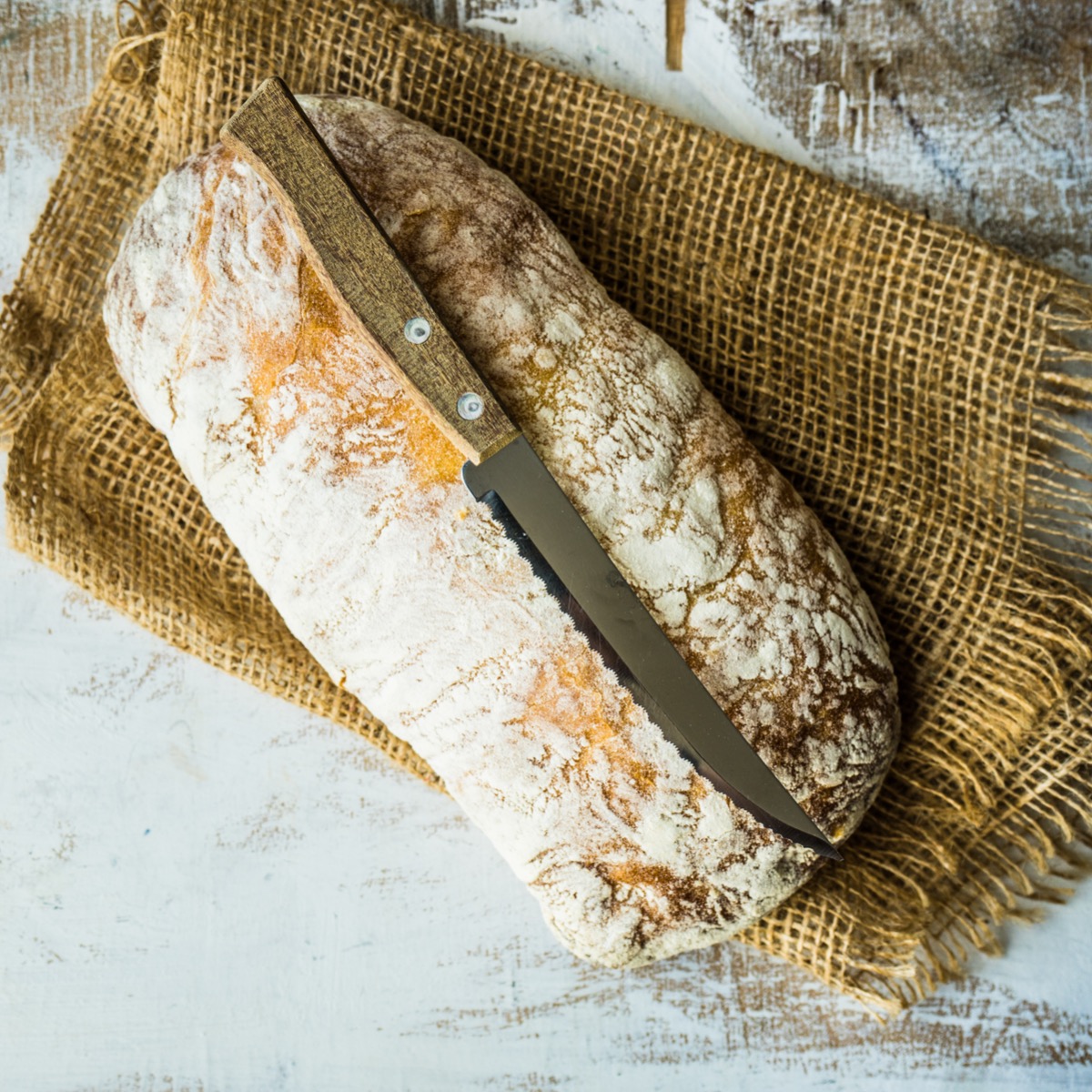
Ciabatta bread is an Italian bread known for its elongated shape and chewy texture. It originated in Veneto, in northern Italy, and has become a popular bread throughout the country and beyond.
To make ciabatta bread, you will need bread flour, active dry yeast, salt, olive oil, and water. Mix the flour, yeast, and salt in a large mixing bowl. In a separate bowl, combine the olive oil and water, then add this to the flour mixture and stir until a dough forms.
Knead the dough on a floured surface for about 10 minutes or until it becomes smooth and elastic.
Next, place the dough in a greased bowl, cover it with a towel, and let it rise in a warm place for about an hour or until it has doubled in size. Once the dough has risen, transfer it to a floured surface and divide it into two pieces.
Gently shape each piece into an elongated loaf and place them on a greased baking sheet. Use a sharp knife to make shallow slashes across the surface of the dough, and brush it with olive oil. Bake the ciabatta bread in a preheated oven at 375 degrees Fahrenheit for about 30 minutes or until golden brown.



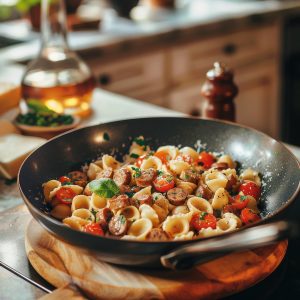






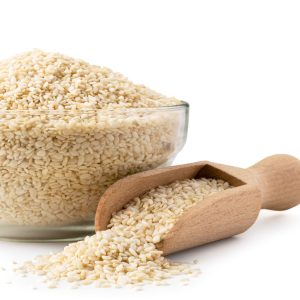





52 Responses
What a great article. Thank you for explaining this.
Thanks Cathy.
thanks for the telling the difference between french and Italian bread . great job
French bakers seemed to attribute minor regional differences to the water. This was my experience when I asked them. Have you found any important differences because of the origin of water?
Thanks for this; it was an interesting read! I think you’ve hit on some distinct differences that still remain despite centuries of cultural and culinary exchange between these two countries – funny how they’ve stuck around!
Perhaps you could do a special on rye bread sometime?
Most of the rye bread in America is of the Scandinavian variety, which differs greatly from Eastern European rye bread. The “black” or rye bread I remember from my childhood had a distinct sour, malty flavor, but the ones I’ve seen in U.S. grocery shops usually taste almost sweet and a little flat. I’d be curious to know the different bread-making methods (I bet the Eastern European version involves sourdough).
It’s always a pleasure reading your articles, and you’ve got a great site!
Try a Russian deli; I don’t know where they all might be but in San Francisco, there used to be one on Church off 28th. My late mother-in-law used to get the kind of black bread you are talking about…
S. Rosen is a Chicago baking company that sells to delis and grocery store deli departments. They make several styles of European rye breads, as well as the poppyseed buns for Chicago style hot dogs. You can also buy on their website. Their rye breads have a chewy crust and substantial textures. Hope this helps!
Thanks so much. Yes as a child my Parents would buy that great heavy dark thick crusted bread with the sour dough taste. Will look for it thanks for the information.
Thanks a bunch for this article. I always wonder what the differences were, now I know.
Hi, nice article. But I don’t think you really meant ” … signature saccharine taste …” Because saccharine tastes terrible. Did you just mean very sweet? As in Sugary Sweet?
Bob, yes and thank you for pointing that out. I will make this correction.
Ummmm, Saccharine means sweet. It just so happens that the artificial sweetener is also named Saccharine. She used it correctly. You are vindicated, Bob is absolutely incorrect. Limited vocabulary often causes misunderstanding.
” Limited vocabulary often causes misunderstanding.”… Wow…
The term saccharine is defined as sweet. It’s been a word far longer than the artificial sweetener your referring to. That’s why they named it as such?
I’d be curious to know more about the baguette version of Italian bread that I grew up with. I love the hard crunchy crust and air light dough and sesame seeds. Also, lard bread and semolina. All my favorites to soak up that Sunday sauce!
Hey Tom I totally know what you mean about the Italian bread with the crunchy crust and moist airy interior. I can’t imagine a pasta dinner without a fresh loaf to enjoy with butter or to absorb the remaining yummy goodness of my grandmas sauce still left in my bowl! One thing though, the term baguette specifically refers to French bread no? Either way take care.
In my hometown, Rockford, Illinois, there is a bakery called piemonte bakery. They bake just a couple of kinds of bread. Their Italian bread has a very hard, thin, dry crust, and a nice soft center, but it’s only good for one day, because there’s nothing in it except flour, water, salt and yeast. It comes in an open paper sleeve, but the grocers who carry it, have to have it in a plastic bag, which completely ruins the crust. On any day of the week, you can drive right up to the bakery doors, which are big garage type doors, hand them your money, (was $1 for years) and take a fresh loaf off the commercial racks. VERY low tech, and VERY special.
Sounds absolutely amazing Cindy.
Columbus Baking Co. in Syracuse NY is the best Italian bread I’ve ever eaten. They also make bread with four ingredients: flour, salt, yeast and water. Also low tech, but the best! They’ve been in business since 1895. If you’re in the area, it is very worth the trip.
hi what is the length of an Italian bread?
Interesting question Lynn. There are many different sizes and shapes of bread available in Italy. If you are referring to the classic long loaf we here in America associate with Italian bread, I don’t know if there is a standard size. Does anyone more familiar with this subject know if there is or not?
Hello, your article is very cute, panettone isn’t bread, though. It’s a dessert we Italians eat at Christmas holidays. Piadina isn’t really bread…although it’s like a panino, you don’t put a piadina on the table and eat it with, say, a main course. It’s like pizza. Italian bread we eat at lunch or dinner doesn’t have neither milk, nor sugar, our bread with milk is sweet and we eat it in the morning at breakfast with butter and sugar or jam, some kids eat it in the afternoon as a snack.If we make a comparison, is with French brioche.
Have you ever had ferrarese bread? Its name is coppia ferrarese (ciopeta in local language), it’s my favorite Italian bread, is to die for.
Ciao
Hi Giulia, thank you so much for your comments. Although I don’t agree with all your definitions for what is and what is not considered bread, I do appreciate your very informative information.
Do you think it makes a difference in a bread pudding though? Would the baguette absorb more of the custard because it is a dryer bread? But should the crusts be trimmed off first I wonder?
What a great read, thanks so much!
I was in my local supermarket this morning just after the breads were put out, and the “French” and “Italian” breads were next to each other. Since they looked and felt basically the same, I asked the bakery worker to explain the difference — with a smile on her face, she said, “One is baked by a Frenchman, and one is baked by an Italian man!” She chuckled as I realized she meant there was no difference (at least not in this store).
Too funny Bruce.
When I was in Paris for work, the locals we were teaching informed us that the bread served in the baskets was to be eaten WITH the meals, same as the Italians, soaking up broth and sauces or using it as the vessel for meat and vegetables. This was also backed up by the visitors from Lyon and Marseilles.
There’s one major difference between a true baguette and whatever passes for it elsewhere in the world and that’s the crust. A real baguette has a crispity crunchity chewy crust. It’s as integral to the bread as any of it’s other characteristics. Without it, all you have is skinny bread.
This is achieved through steam baking. Commercial ovens have a way of letting this in but you can do it at home by placing a pan of water in the oven or by spritzing the bread with a spray bottle as it bakes.
And the funny thing is, the best baguettes I’ve had outside of France, were in Japan of all places. They take things like food preparation out there very seriously and most of the baguettes there I’ve had were top notch.
I bought a French ‘baguette’ bread at the local grocery for the first time to experiance what I thought was a true french bread. After reading this article I decided to look at the ingredients:
Enriched unbleached wheat flour (wheat flour, niacin. iron as ferrous sulfate, thiamine mononitrate, enzyme, riboflavin, folic acid) water, yeast, contains less than 2% of the following: salt, malt powder (corn syrup solids, barley malt extract), sugar, wheat gluten, soybean oil, datem, ascorbic acid, potassium iodate, monocalcium phosphate, calcium sulfate, ammonium chloride, L-cysteine hydrochloride.
I guess it must have been baked by a frenchman (as defined in one of the comments above). I am afraid to check the ingredients in the store’s Italian ‘stick’ bread.
There are no local bakeries in town but I have not checked other local grocery bakeries.
At least they loaded this ‘french’ bread with healthful vitamins.
I used to buy loves of French bread at a chain market because I could not get my bread machine product(s) to have that wonderful aroma and flavor. However, recently their bread has just become a fancy shaped loaf of white bread that does not have that unique and powerful aroma or taste of what I like in a French bread. Can you advise as to what is the missing ingredient(s) or technique that makes a French bread with a lot of “nose”? LOL
Time
I am curious. I need to follow a FODMAP diet. I can eat sour dough bread without a problem. I can also eat French and Italian bread bought at our local bakery…..and have no problem. Does the fermentation process reduce the fructans?
Hi Michelle, very interesting question but I will have to reach out to someone or hope someone with more nutritional experience sees this and answers your question.
It’s “pain de campagne”, “countryside bread”. And not “pain de champagne”, “bread of champagne”
Small mistake, but as a french made me smile.
Thanks Thierry for catching that.
French Bread is not always a long and thin loaf. Check the images on this world-famous site. Absolutely the best tasting French Bread on the planet. After a night of clubbing (60 years ago and still happening) people would park at the bakery and wait for the red light out front that indicated the baking was done. A couple of loaves for the car and with a lot of butter was the celebration to end the evening.
http://lejeunesbakery.com Click on Photos.
Bread in Paris and other French cities was great. LeJeunes is spectacular!
Michelle is correct. At lunch and dinner, bread is on the table during all courses of a French meal except dessert. It is not served with butter and is never offered as a starter. Its main purpose is to mop up the sauces. At breakfast, baguettes are served with butter and jams. On special occasions (or at hotels), croissants and pains au chocolat (chocolat croissants) are also offered.
I have never seen French toast on a menu. It is made at home as a way to use up dry bread.
Well I was in Publix today and the girl in the bakery is trying to tell me French and Italian bread is the same which is a joke
Have you ever been to France or Italy? Because this is mystifying.
There is no such thing as French or Italian bread per se, it’s is one hundred percent American/ American ethnic marketing. There are French and Italian originations of certain types of breads of which there are hundreds if not thousands of different recipes and processes. Every region and even municipal communities in both countries have their own unique breads.
Great article. I am a pretty good and inventive cook, but I have been struggling to make good bread; this article helps to show what should be in true French or Italian bread in the first place, which at least shows me where to (re)start. Thank you.
Love the info in this article. Thanks
Eye-opening article. Thanks!
Hi There!
With this pandemic, I’ve been staying in the kitchen. I’ve cooked different meals, baked cakes and pies and decided I wanted to make a French bread. But, what I remember is my dad used to bring home an Italian bread that was crusty, was “braided” on top with sesame seeds and was fought after (we did!). Now that my dad has passed away now many years, I thought of him!
I’ll make him proud and bake an Italian bread like he used to bring home! So, my dear gourmet, what can you share with me to make my dad proud??
“By law in France, bread cannot have added oil or fat…France is famous for its brioche, a sweet bread that is made with unsalted butter”
great report on bread but not enough on Italian bread. I found a bakery in Monterey California which makes a bread-like I had at home. It’s a man’s bread, thick, hard, even some sharp edges, inside it’s tasty, chewy and delicious. I now cut out all desserts and snacks and, instead eat a chunk of this “Italian long and heavy roll. The bakery’s bakers won’t even talk to walk in customers.
Wow. I LOVE each and every one of these, but I’ve wondered about this most of my life. Thank you so much for explaining.
You are very welcome Lisa.
Interesting comparision. The equivalent of the French baguette is in general the Ciabatta stick. About same length, usually flatter and a bit larger and with an identation along the bread rather than multiple perpendicular or diagonal ones. There is a reason for this.
Your observation as to the moist characteristics can found their origin in the quantity of water included when making the dough.
A traditional baguette raw doe contains about 45-46% water volume flour to water before rising, while a Ciabatta dough has about 53 to 55%. Making the dough more difficult to manipulate. And with the result of a crust which is softer, appreciated for people with very soft skin on their palate. Naturally, this doe may be shaped in many ways, including small triangles and diamonds. The fragility of the dough is the reason we perform the incision all along the bread.
I didn’t know that Italian bread had olive oil on it. I need to get new bread for my sister. I’ll have to consider getting some in bulk.
Both countries make a huge variety of bread, but when people ask the difference between “French” and “Italian” bread, they usually mean the difference between a baguette and the shorter elongated bread that is sold as “Italian” in most places. In the case of those two loaves, the difference is 1. Olive oil. Italian bread has it and French does not. and 2. Shape. French is longer and thinner. Italian is shorter and fatter. Most baguettes are crustier than the standard Italian loaf but that’s mainly because the Italian loaf sold all over is designed for sandwiches, while the baguette is more of a standalone food, eaten with other things, but not necessarily inside the bread.
Some Italian breads use sugar to feed the yeast. French does not.
Thanks for the excellent article. I am looking to revive the dense, chewy, yeasty bread that my Italian grandma taught my mom to make, and this gives me some useful pointers. It was very much like what Tony Caetano described above. Sometimes we too would skip dessert and toast a slice of it, with lots of butter and some strawberry jam.